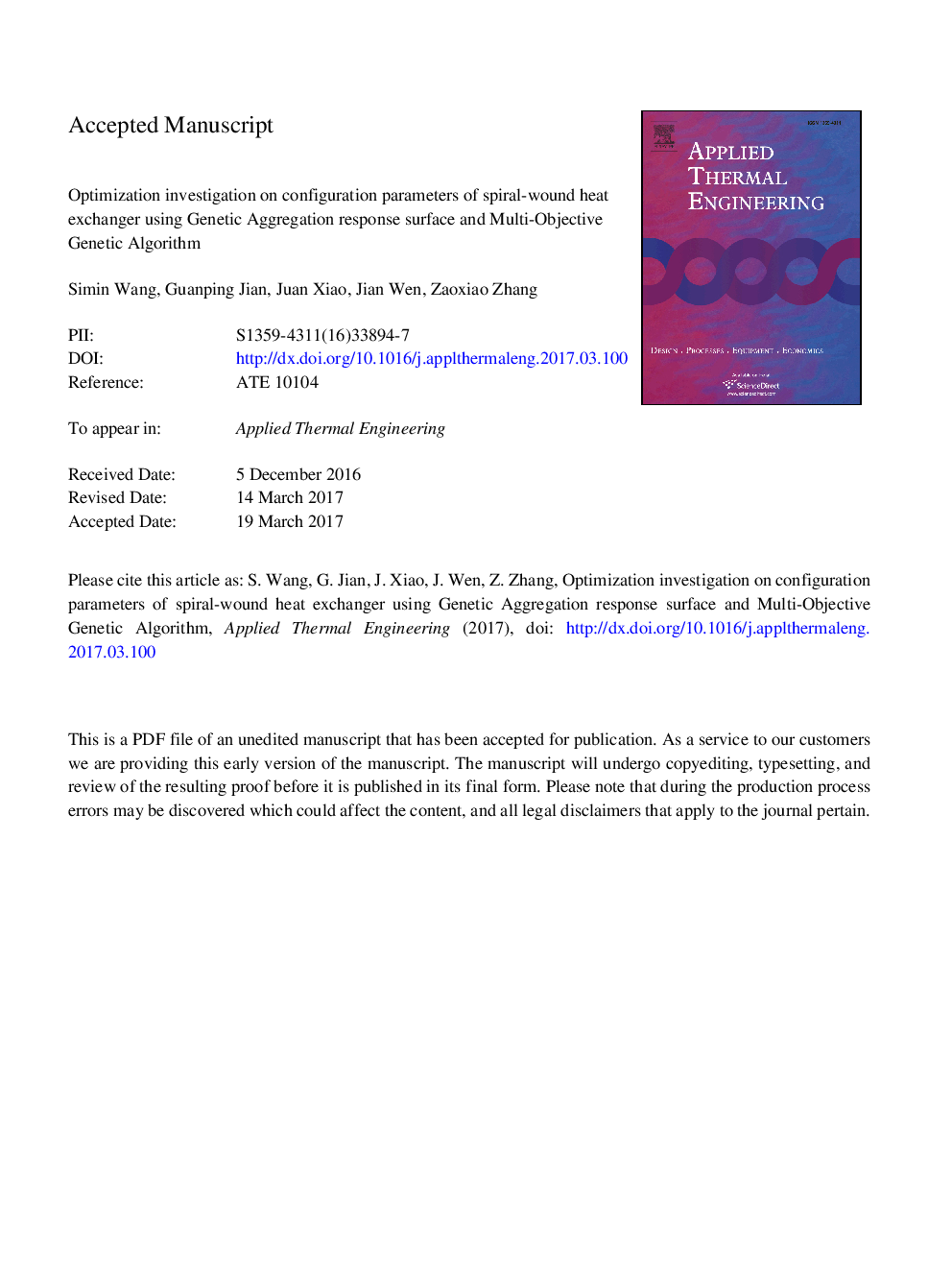| Article ID | Journal | Published Year | Pages | File Type |
|---|---|---|---|---|
| 4991320 | Applied Thermal Engineering | 2017 | 24 Pages |
Abstract
Based on the method combining Genetic Aggregation response surface and Multi-Objective Genetic Algorithm, the effects of configuration parameters of spiral-wound heat exchanger (SWHE) on flow and heat transfer characteristics were numerically studied. The results show that the shell-side pressure drop of the spiral-wound heat exchanger decreases with the increase of layer pitch, winding angle and tube pitch, respectively. The shell-side heat transfer coefficient of the spiral-wound heat exchanger decreases with the increase of layer pitch and increases with the external diameter of tube. The shell-side heat transfer coefficient increases firstly with the increase of the winding angle and then decreases. The sensitivity analysis also shows that the shell-side flow and heat transfer characteristics are mainly affected by the winding angle. Under the working condition, the pressure drop and heat transfer coefficient are both negatively correlated with the layer pitch. And the winding angle is negatively correlated with the pressure drop, but positively correlated with the heat transfer coefficient. Three optimal configurations were obtained by the Multi-Object Genetic Algorithm based on Genetic Aggregation response surface. Compared with the original configuration, the average heat transfer coefficient of improved ones is enhanced by 2.93%, while the average pressure drop is reduced by 40.27%. The results are of great significance for the design of spiral-wound heat exchanger.
Related Topics
Physical Sciences and Engineering
Chemical Engineering
Fluid Flow and Transfer Processes
Authors
Simin Wang, Guanping Jian, Juan Xiao, Jian Wen, Zaoxiao Zhang,
